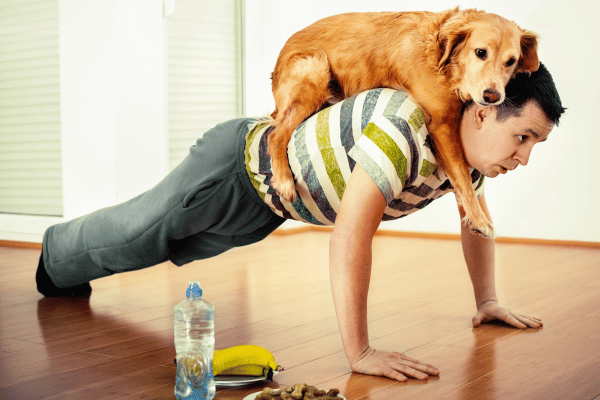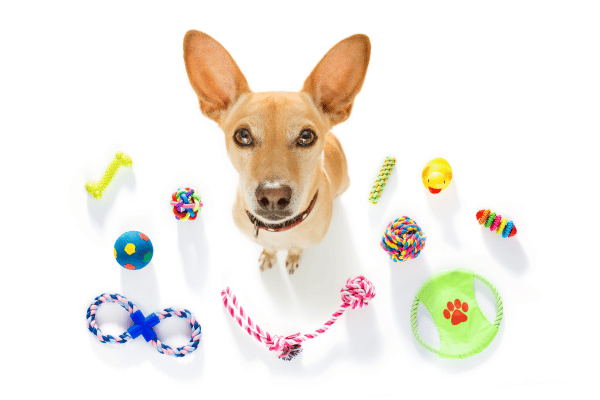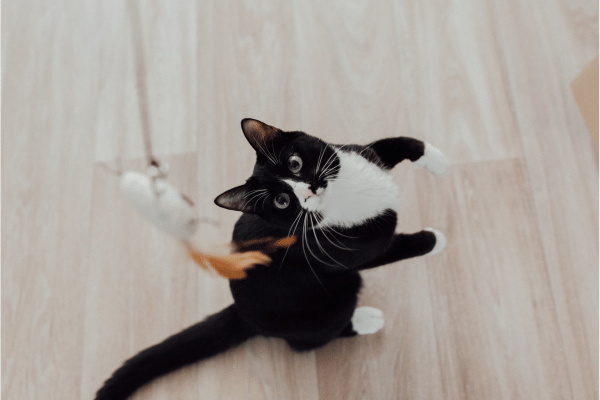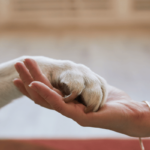Creating an effective exercise routine for pets is crucial for their health and happiness. It’s important to understand the unique needs of your furry friends, as different breeds and ages require varied levels of activity. This guide, crafted by a seasoned pet care expert and vet, will delve into the nuances of pet exercise.
Understanding Your Pet’s Exercise Needs

Firstly, it’s essential to recognize your pet’s specific exercise requirements. For instance, young, energetic dogs might thrive on long runs, while older or smaller breeds may prefer short, brisk walks. Similarly, cats generally enjoy shorter bursts of activity. Tailoring the exercise to their age, breed, and health condition is key to promoting their well-being.
Moreover, the type of exercise matters greatly. Dogs often benefit from a mix of walking, running, and playtime, which enhances their physical and mental health. Cats, being natural predators, enjoy games that stimulate their hunting instincts. Incorporating interactive toys and obstacle courses can make exercise more engaging for them.
Finally, consistency is vital in any exercise routine. Establishing a regular schedule not only helps in maintaining your pet’s physical fitness but also provides them with a sense of security. Gradually increasing the intensity and duration of the exercise can prevent injuries and enhance their endurance.
Incorporating Play and Training
Incorporating play into your pet’s exercise routine can be a game-changer. Playtime is not only fun but also an excellent way for pets to expend energy. For dogs, fetching games and agility training can be both mentally stimulating and physically demanding. Cats, on the other hand, might prefer chasing laser pointers or feather toys, which mimic their natural hunting behaviors.
Training sessions are also an effective form of exercise, especially for dogs. Basic commands like sit, stay, or fetch not only provide physical activity but also strengthen the bond between you and your pet. For cats, training might include learning to navigate through various obstacles or respond to simple commands, which keeps their mind sharp and body agile.
However, it’s crucial to keep these sessions positive and stress-free. Pets respond best to positive reinforcement, so using treats and praises makes the experience enjoyable for them. Remember, the goal is to have fun and enhance their overall well-being through physical activity.
Balancing Exercise with Rest
Balancing exercise with adequate rest is crucial for your pet’s health. Overexertion can lead to injuries or burnout, especially in older pets or those with existing health issues. Monitoring their behavior during activities can provide insights into their comfort levels. Signs of fatigue, such as excessive panting or reluctance to continue, indicate it’s time to take a break.
Additionally, rest days are important. Just like humans, pets need time to recover after intense physical activities. These rest periods help in muscle repair and prevent the risk of chronic injuries. On these days, lighter activities like gentle walks or short play sessions can keep them engaged without overtaxing their bodies.
Also, consider the environment when planning exercises. Extreme weather conditions can affect your pet’s ability to exercise safely. During hot days, opt for early morning or evening walks to avoid heat exhaustion. In colder weather, shorter and more frequent walks can help maintain their exercise routine without exposing them to harsh conditions.
Adapting to Your Pet’s Changing Needs

Pets’ exercise needs evolve over time, so it’s important to adapt their routines accordingly. Puppies and kittens are usually bundles of energy, requiring frequent but short bursts of activity. As they grow into adulthood, their stamina increases, and so does their need for more prolonged and intense exercise. Senior pets, however, might slow down, needing gentler, less strenuous activities to stay active.
Health conditions can also necessitate adjustments in exercise routines. For example, a dog with arthritis might benefit from low-impact activities like swimming, which puts less strain on the joints. Similarly, a cat with a chronic condition might need shorter, more manageable play sessions. Always consult with a veterinarian to tailor the exercise routine to your pet’s health needs.
Furthermore, it’s essential to observe your pet’s reaction to their exercise routine. Regular monitoring can help you notice changes in their energy levels or mobility, signaling a need for adjustments. Staying attentive to these changes ensures that your pet’s exercise routine remains beneficial throughout their life stages.
Safety First in Pet Exercise
Ensuring safety during exercise is paramount. For outdoor activities with dogs, using a suitable leash and harness prevents accidents and provides control. Always have water available to avoid dehydration, especially during warmer weather. For indoor cats, ensure that the play area is free of hazards like small objects they could swallow or sharp edges.
Also, be aware of your pet’s surroundings. When walking your dog, choose safe, well-lit areas, and be cautious of other animals that might provoke a confrontation. For indoor cats, regularly inspect their toys and play structures for wear and tear to prevent injuries from broken parts.
In addition, consider your pet’s vaccination and parasite control status, especially if they’re exposed to other animals or outdoor environments. Regular check-ups with a veterinarian play a critical role in ensuring that they are fit and healthy enough to engage in physical activities.
Monitoring Progress and Adjusting Goals
Regularly monitoring your pet’s response to their exercise routine is key to maintaining optimal health. Tracking their progress can involve noting changes in their stamina, agility, and overall enthusiasm for activities. This observation helps in understanding whether the current routine is effective or if it needs adjustments.
Adjusting goals as your pet progresses is also important. For example, if your dog shows improved stamina, you might gradually increase the length or intensity of walks. Conversely, if your cat seems less interested in play, it might be time to introduce new toys or activities to reignite their interest.
It’s essential to remain flexible with these goals. Every pet is unique, and what works for one might not for another. Tailoring the routine to suit your pet’s individual needs, preferences, and abilities ensures that they stay engaged and healthy.
Involving the Whole Family in Pet Exercise
Involving the whole family in your pet’s exercise routine can be a fun and bonding experience. Encourage all family members to take part in walks, play sessions, or training activities. This not only varies the type of interaction your pet receives but also reinforces their social skills and family bonding.
For children, participating in pet exercise can be educational and instill a sense of responsibility. It’s important, however, to supervise these interactions to ensure they are safe and positive for both the child and the pet. Teach kids how to properly play with pets, respecting their boundaries and understanding their body language.
Moreover, involving different family members can add variety to the routine. Different people may engage in different activities or play styles, which can be stimulating and exciting for pets. This diversity helps in keeping the routine interesting and engaging for your pet.
Exercise Routine for Pets: Finding the Balance
Finding the right balance in your pet’s exercise routine is essential. It’s not just about the quantity of exercise but also the quality. For dogs, a mix of walks, runs, and playtime offers a well-rounded routine. Cats enjoy short, intense play sessions interspersed with periods of rest. Tailoring the routine to fit their natural behaviors ensures they stay happy and healthy.
Remember, every pet is unique. Some may require more physical activity than others. Observing and understanding your pet’s preferences and limitations is key. Don’t hesitate to modify the routine if you notice signs of discomfort or lack of interest. The goal is to keep them physically active and mentally stimulated.
Consistency is also crucial. Try to stick to a regular schedule as much as possible. This predictability can help reduce anxiety in pets and establish a sense of routine. However, be open to making adjustments as your pet’s needs change with age or health conditions.
Celebrating Milestones in Pet Fitness

Celebrating milestones in your pet’s fitness journey can be highly rewarding. Whether it’s mastering a new trick, completing a longer walk, or simply showing increased enthusiasm for exercise, acknowledging these achievements encourages positive behavior. Small rewards, like a favorite treat or extra playtime, can be great motivators.
Tracking these milestones can also be helpful. Keeping a log or journal of your pet’s exercise activities, progress, and any notable achievements helps you see their growth over time. This record can be useful for veterinary visits, where you can discuss your pet’s physical activity and any needed adjustments.
Moreover, these celebrations strengthen the bond between you and your pet. They sense your excitement and approval, which enhances their willingness to participate in activities. This positive reinforcement makes exercise a joyful and anticipated part of their day.
Emphasizing Mental Stimulation in Exercise
Exercise for pets isn’t just about physical activity; mental stimulation plays a crucial role too. Engaging your pet’s mind through activities like puzzle toys, scent games, or new training challenges keeps them mentally sharp. For dogs, this could mean hide-and-seek with treats, while cats may enjoy interactive toys that mimic prey movements.
Mental stimulation can be especially important for pets with limited mobility or those who spend a lot of time indoors. Creative games and training exercises can provide the necessary mental engagement without excessive physical strain. This approach helps in preventing boredom and related behavioral issues.
Remember, the goal is to provide a holistic approach to your pet’s well-being. A combination of physical and mental exercises ensures a balanced lifestyle, contributing to their overall health and happiness. Paying attention to both aspects can make a significant difference in your pet’s quality of life.
IN SUMMARY
In conclusion, crafting the perfect exercise routine for your pet is a blend of understanding their physical needs, providing mental stimulation, and ensuring safety. Regular exercise is vital for maintaining your pet’s health, but it’s equally important to adapt the routine to their individual needs and life stages. Celebrating milestones and involving the whole family can make this journey enjoyable for both you and your pet.
Remember, consistency in their exercise routine provides a sense of security, but flexibility is key to accommodate their changing needs. Always keep an eye out for their comfort and well-being during activities. Engaging in a variety of exercises and incorporating play and training will not only keep them fit but also deepen the bond you share.
We encourage you to apply these guidelines and observe the positive changes in your pet’s health and behavior. Share your experiences, ask questions, or visit our other pages for more pet care tips. Your engagement and feedback are valuable to us. Let’s work together to ensure the best care for our beloved pets!
Reference used: ASPCA – General Pet Care

Join Dan Morgan at dwfocus.com, your hub for ‘4 paws and owners’ wisdom! Explore a world where pet care meets expert insights, crafted by Dan, a seasoned vet with a heart for animals. Engage with stories, tips, and advice that every pet owner needs. From playful pups to graceful cats, Dan Morgan guides you through the joys and challenges of pet parenting. Embrace your love for pets with Dan’s expert guidance on dwfocus.com. #4PawsAndOwners #DanMorganPetExpert #dwfocus







